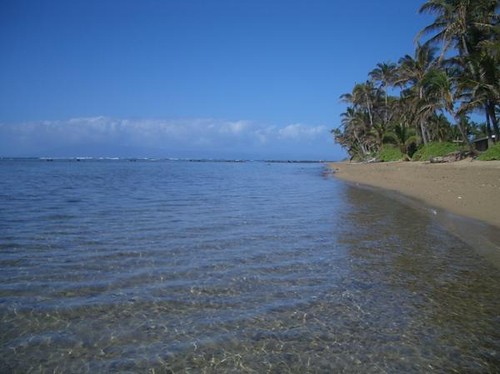This is a subject I’ve struggled with in the past and would be interested to hear other people’s viewpoints in the comments.
There is something to be said for checking “must see” items off your life list – we all travel to some extent to “see” things when we go places. But what happens when that attraction, that thing you go to “see” is group of people? How is it different than viewing animals in the zoo, supposedly in their natural habitat?
For me, a visit to the Karen hill tribe people in a tiny village outside Chiang Mai was one of those uncomfortable moments when I felt like I’d crossed the line.
The Karen hill tribe is one of those stops on just about every tour brochure, somewhere in between riding the elephants, taking a shot of snake whiskey and visiting the Golden Triangle. It seems so exotic, unusual, foreign. The women in the tribe are famous for the long metal coils that they wear around their necks, which push their collarbones down in order to make the neck appear longer. It’s really the kind of thing you have to see to believe, although staged photos are quite common and organized tours have become the main form of revenue for many of the villages in this area.

I’m all for “slow” travel and if I have my choice, I prefer to live in a place to get a feel for it rather than touring around on air conditioned buses, although I have nothing against either type of travel, really. It’s a case of to each his own, and I’m fine agreeing to disagree in most cases. However, visiting this hill tribe village didn’t feel like getting to know people – it felt much more akin to visiting animals at the zoo. Yes, they want you to be there – grandmothers watch over their young granddaughters who sit weaving fabric on looms as you watch, and you’re able to browse through the various scarves and material that have as the finished product. The monies from sales help to support the families in the tribe. But something about it was just so unsettling for me, wrong somehow.
Another odd thing – it appeared that an entire generation wasn’t represented in this “snapshot of daily life” that was being marketed so aggressively to us. I noticed mostly old women or very young girls among the villagers. When I later asked our guide about this, he told me that most of the young people don’t want to continue to be put on display like this, so many of them have gone off to school and don’t return. This, to me, was almost as sad as it means that this amazing society and way of life is slowly being lost.

Here in Hawaii, where I was born and raised, there is a somewhat similar problem – although I guess the same can be said of any place where the main driving force behind the economy is tourism. Our beautiful way of life, which is often marketed as Aloha Spirit, shows off sunny, cloudless skies and postcard-perfect sunsets – what happens when the tourists arrive here and get rain? Or if their encounters with locals aren’t always so picturesque? What happens when the reality isn’t packaged as pretty as you saw in the brochures?
I’ve found that in my travels, when I’m on an organized tour, even one that is billed as “off the beaten path” like the hill tribes were, I have to take things with a grain of salt. Sure you can stick to the well-touristed paths and see things, but authenticity is often up for grabs. We all walk a fine line between tourism and voyeurism when traveling to an area that is outside of our comfort zone or different from the way we live. And those uncomfortable situations where things aren’t always living up to your expectations, that may be the perfect chance to expand your views and to challenge what is presented to you in the guidebooks, following your own inner compass.

Malia Yoshioka has traveled all over the world, but still feels lucky to call Honolulu her home base. Follow her on Twitter at @WhyGoHawaii for the latest news, insider tips, and travel deals for Hawaii.
